60+ safety tips and suggestions for the warehouse
We have provided 60+ safety tips and suggestions for your warehouse operations below.
Warehouse Cleanliness and Organization:
1. Emphasize safety in your warehouse operations to prevent any accidents or injuries.
2. Check your work area thoroughly before starting the work to ensure the workspace is safe.
3. Dispose of waste promptly for cleanliness and to avoid problems like tripping.
4. Maintain a clean and hygienic environment in the warehouse. Provide cleaning equipment like brooms, dust pans, trash cans, etc.
5. Dispose of broken pallet pieces in assigned bins for a safe workspace.
6. Place separate bins for cardboard and other trash for efficient waste management and recycling.

7. Ensure proper dock door seals to avoid water leaks and maintain a dry working area.
8. Make sure ergonomic mats are well secured to the floor. ergonomic mats are used for reducing fatigue.
9. Keep equipment charging stations at a safe location to avoid fire hazards while charging.

10. Place PPE (Personal Protective Equipment) dispensaries at designated locations so workers can easily access safety gear. Safety gears include gloves, safety glasses, safety helmets, high-visibility vests, etc.
11. Check for the air quality inside the warehouse to ensure workers’ well-being.
Movement and Walkway Safety:
12. Before turning at corners, ensure no others are coming to avoid collisions
13. Use a light when loading trailers so that others see you and avoid collisions.
14. Wear bright color vests so that the workers are visible to each other.
15. Always keep an eye on your walking or driving path to avoid collisions.
16. Consider using mirrors to enhance visibility at intersections and corners.

17. Make sure the signages are not damaged and visible.
18. Place anti-slippery mats in wet and slippery places.
19. Use safety shoes to protect your feet from injuries and prevent slipping.
Heavy objects handling
20. Don’t use your back for lifting heavy objects instead bend your knees and use your leg muscles to avoid back injuries.
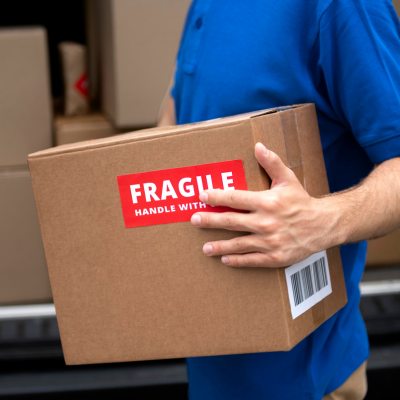
21. Use a “heavy” label for heavy items and “Fragile” for delicate items to notify workers for safe handling.
22. Always ask for help from co-workers if you need help lifting items.
23. Train the employees on proper lifting techniques.
Storage and maintenance
24. Place heavier items at the bottom and lighter ones at the top to maintain the stability of stacks and prevent them from collapsing.
25. Close and secure boxes properly, using strong tape to avoid opening or spilling.
26. Distribute weight inside the boxes evenly.

27. Clean and remove leftover pallets or debris in the storage space before placing new products.
28. Make use of ladders for taking items at a height to avoid falling and accidents.
29. If the storage contains hazardous materials, provide instructions on how to store, handle, and dispose of them.
30. If the storage contains confidential materials, ensure security to avoid unauthorized access.
Equipment handling and maintenance:
31. Don’t be distracted while using powered equipment to avoid accidents. For eg. Avoid consuming food during those times
32. You should be careful when unpacking boxes to avoid cuts or injuries.
33. Consider wearing good-quality gloves to protect your hands from injuries.
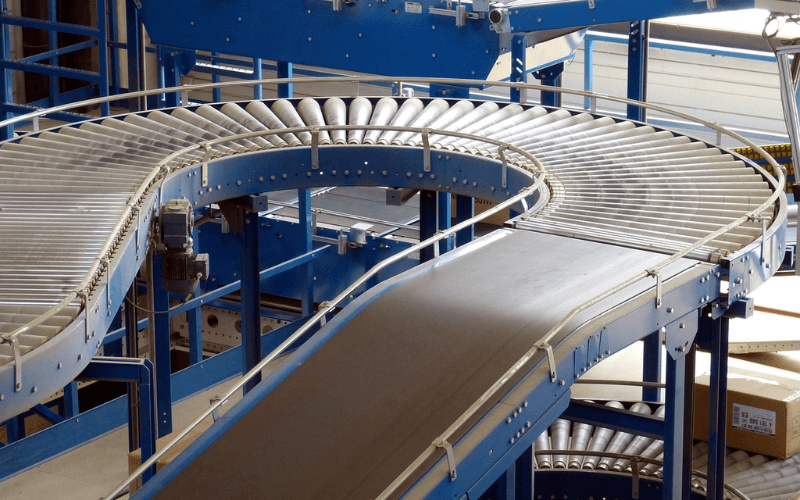
34. Stay away from conveyor rollers to avoid injuries by contact with moving parts.
35. Use fitted clothes as loose clothes may get caught in machinery.
36. Avoid sitting or leaning on conveyor belts to avoid injuries.
37. Tie up or keep hair above the shoulder to avoid injuries by hair caught in machinery.
38. Avoid repairing equipment if you are not trained to do so to prevent damage and injuries.
39. Regularly check and repair pieces of equipment.

40. Properly store fall protection harnesses when not in use to ensure their safety and accessibility when in need.
41. Clean protection harnesses to maintain their condition.
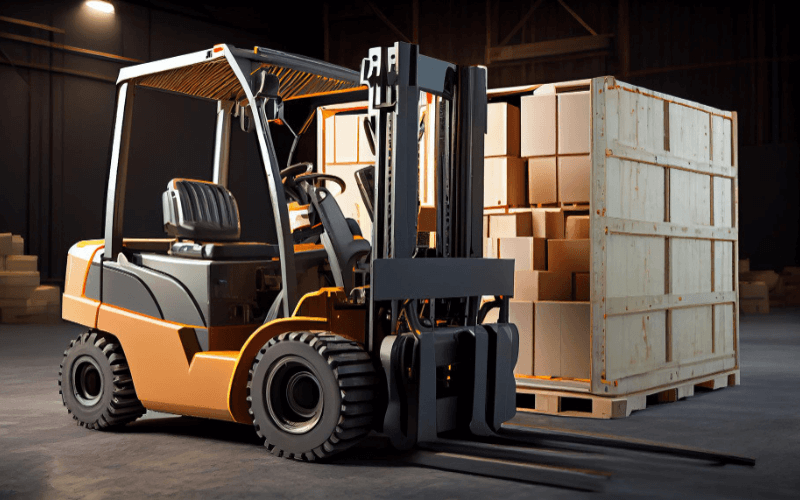
42. Keep your 5 body parts in contact with the PIT (Powered Industrial Truck) to maintain balance and avoid falling. The 5 body parts include 2 hands, 2 feet, and knee or elbow.
43. Teach employees how to use tagout equipment.
44. Designate a separate area for keeping damaged tools and equipment to avoid using them.
45. Train employees on how to use equipment properly.
Emergency Preparedness:

46. Train employees how to act effectively in case of sudden fire.
47. Place cold weather gear strategically to be easily accessible in case of emergency.
48. Ensure employees are aware of emergency exits and evacuation procedures.
49. Provide emergency instructions on equipment for quick reference at critical times.
50. Promptly notify the safety team if you see any unknown or hazardous things.
51. Avoid traditional methods of reporting safety hazards. Use digital ways to ensure quick reporting and resolving problems like using mobile apps that facilitate quick reporting with added photos, descriptions, places, etc.
52. Train employees on how to act in emergencies.
Health and wellness:
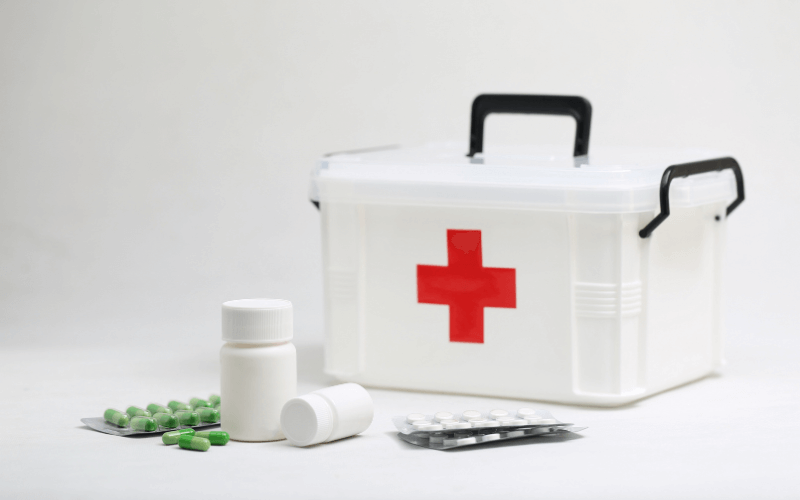
53. Make first aid kits available and easily accessible. Teach employees how to use them.
54. Analyze the various warehouse tasks and make sure to minimize physical strains.
55. Ensure the emergency eye wash stations are available and functioning properly.
56. Encourage daily stretching exercises that help in flexibility and prevent musculoskeletal problems.
57. Remind the workers to drink water often to avoid dehydration.
58. Fasten and secure loose cables in the warehouse. This prevents fire hazards and tripping of workers due to the cables lying on the floor.
59. Protect hazardous machines using safety guards. This helps in keeping people away from the machines.
60. Schedule regular meetings to discuss and resolve any safety concerns.
Additional Safety Tips:
61. Check and maintain the speed bumps in the warehouse parking lot in good condition.
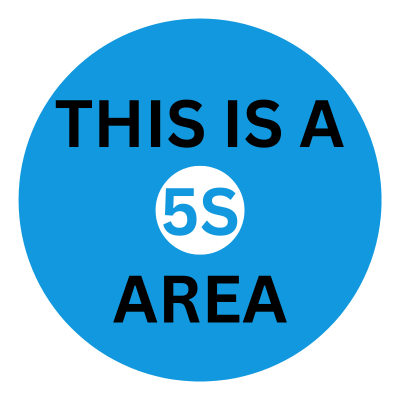
62. Evaluate the workspace focusing on the 5S principles and update accordingly. 5S stands for Sort, Set in order, Shine, Standardize, and Sustain which helps in the efficiency, organization, and safety of the workspace.
63. Utilize EHS (Environmental, Health, and Safety) software to monitor and handle safety-related tasks.



